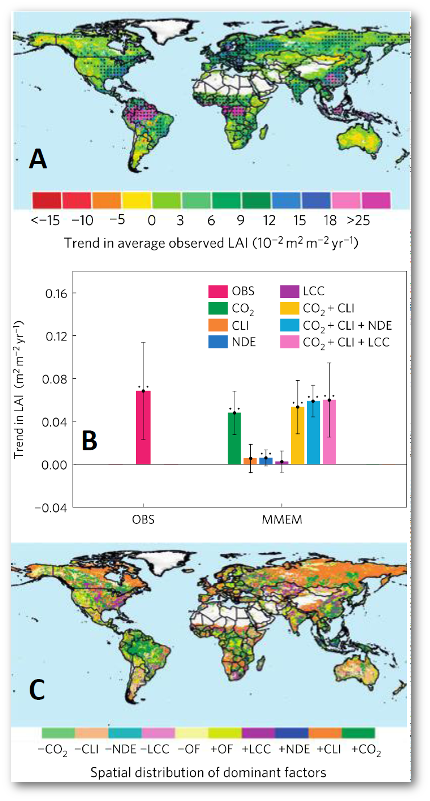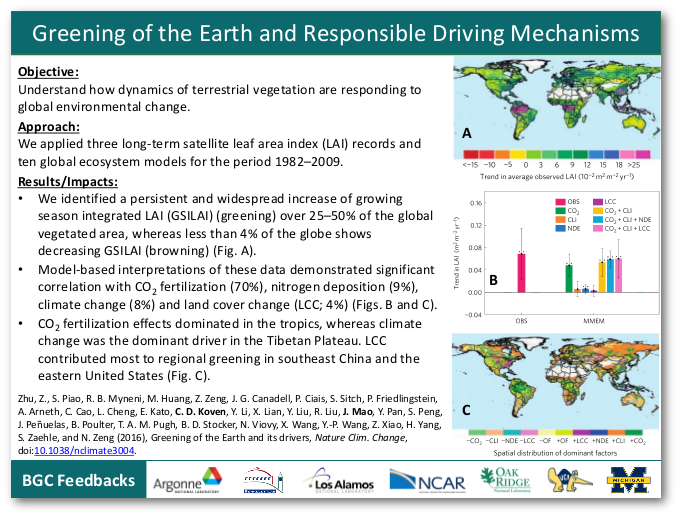Research Highlights
Greening of the Earth and responsible driving mechanisms
April 25, 2016
Objective
Understand how dynamics of terrestrial vegetation are responding to global environmental change.
Approach
We applied three long-term satellite leaf area index (LAI) records and ten global ecosystem models for the period 1982–2009.
 |
Results/Impacts
- We identified a persistent and widespread increase of growing season integrated LAI (GSILAI) (greening) over 25–50% of the global vegetated area, whereas less than 4% of the globe shows decreasing GSILAI (browning) (Fig. A).
- Model-based interpretations of these data demonstrated significant correlation with CO2 fertilization (70%), nitrogen deposition (9%), climate change (8%) and land cover change (LCC; 4%) (Figs. B and C).
- CO2 fertilization effects dominated in the tropics, whereas climate change was the dominant driver in the Tibetan Plateau. Land cover change (LCC) contributed most to regional greening in southeast China and the eastern United States (Fig. C).
Zhu, Zaichun, Shilong Piao, Ranga B. Myneni, Mengtian Huang, Zhenzhong Zeng, Josep G. Canadell, Philippe Ciais, Stephen Sitch, Pierre Friedlingstein, Almut Arneth, Chunxiang Cao, Lei Cheng, Etsushi Kato, Charles D. Koven, Yue Li, Xu Lian, Yongwen Liu, Ronggao Liu, Jiafu Mao, Yaozhong Pan, Shushi Peng, Josep Peñuelas, Benjamin Poulter, Thomas A. M. Pugh, Benjamin D. Stocker, Nicolas Viovy, Xuhui Wang, Yingping Wang, Zhiqiang Xiao, Hui Yang, Sönke Zaehle, and Ning Zeng. April 25, 2016. “Greening of the Earth and its drivers.” Nature Clim. Change. doi:10.1038/nclimate3004.
